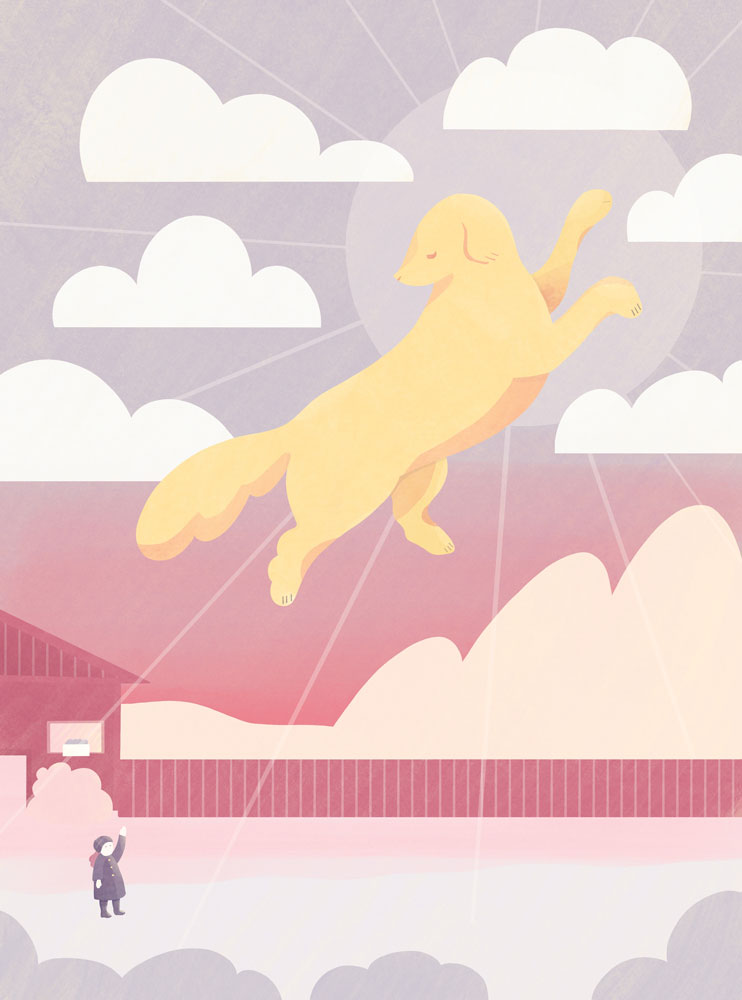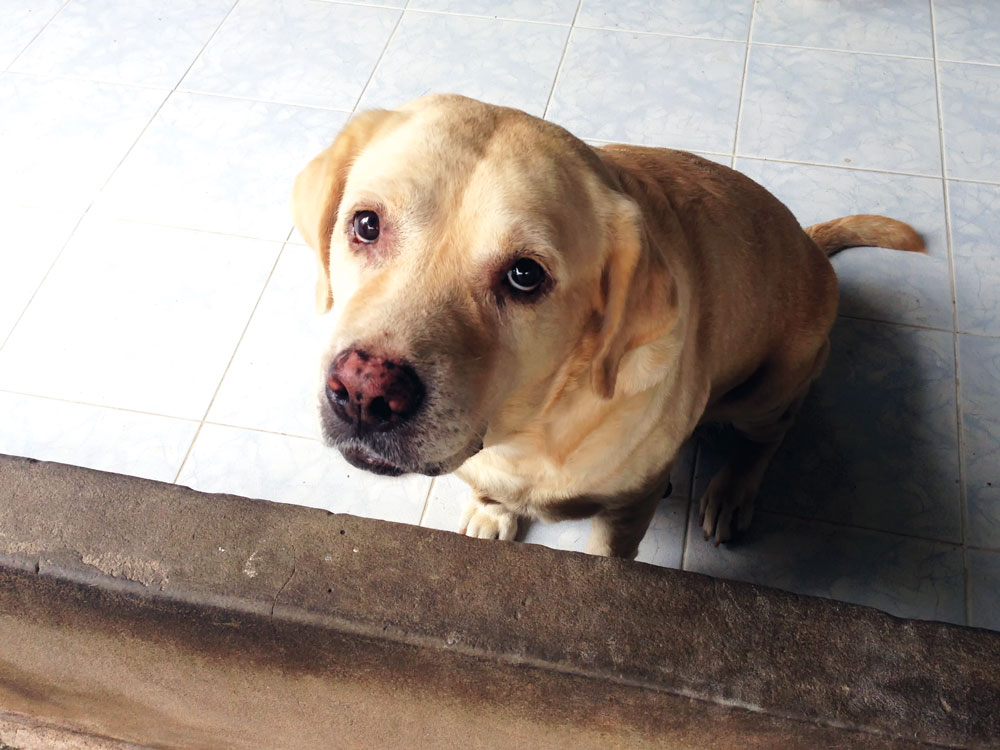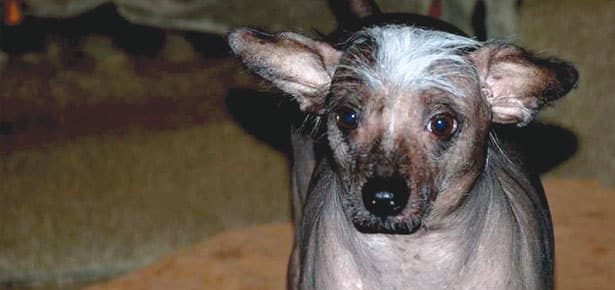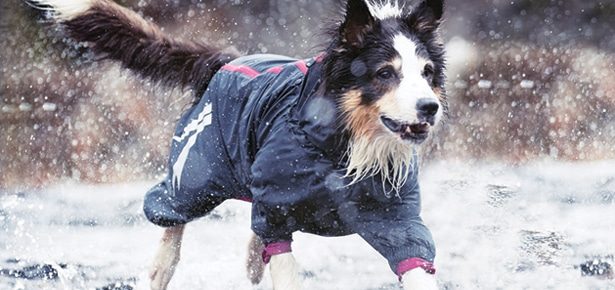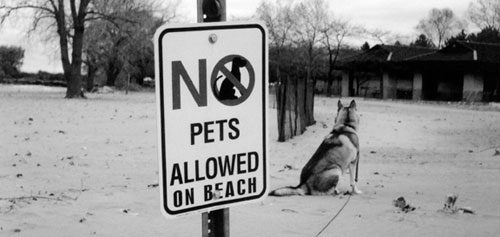

Final Moments, Spent At Home
It’s heartbreaking to say goodbye. At-home euthanasia makes it easier. A growing trend, at-home euthanasias are a blessing for pets and the people who love them.
Rosie was the “friendliest, goofiest” German Shepherd Lisa Walsh ever met in 17 years of running a dog walking business in San Francisco. The dog was already at least ten years old when Lisa formally adopted her from Muttville Senior Dog Rescue, a group dedicated to giving senior pups a second chance.
The bond was instant, and intense.
Lisa’s “big girl” slept in her bed every night, bonded with her other two dogs, and went out with her dog walking groups every day.
But at about 12 years old, Rosie’s health sharply declined. Walking became increasingly difficult, needing a harness to keep her hind legs standing. She became incontinent both from her bladder and bowels, and wasn’t able to go outside except for quick bathroom breaks.
The deterioration wasn’t just physical. Rosie was no longer the happy go lucky dog she was before. “Her disposition changed and she seemed quite sad,” Lisa says.
“I had to help her move on.”
Because Rosie, like so many other dogs, wasn’t crazy about going to the vet, Lisa wanted her to be home for her transition. She had Sherri Franklin, Muttville’s founder, and another friend come over while the vet performed the euthanization.
Lisa calls the experience heartbreaking but also a tribute to a dog she loved very much. They were by her side as the vet sedated Rosie, and once she was asleep, administered the lethal injection that stopped her heart.
“The vet was kind and it took quite a bit longer than it does in a hospital but that was okay, we wanted Rosie to soak up the love we had for her,” says Lisa.
“It's always devastating to see the life go out of your beloved’s eyes but she knew we were there for her. There is no joy but there was a lot of love and tenderness.”
Illustration by Diana Bolton
Growing Trend
At-home dog euthanizations are a relatively new area of veterinary medicine, but it’s quickly growing, as is end of life compassionate and palliative care.
The International Association for Animal Hospice and Palliative Care, established ten years ago, sees at-home euthanization as a compassionate approach or philosophy of care when the goal of pet care shifts from cure to comfort.
Diseases or conditions that would most frequently warrant the end-of-life approach include cancer, organ failure, osteoarthritis, cognitive dysfunction, or dementia or senior pets approaching the end of life. It also includes “failure to thrive,” which is described as any life-limiting condition that is contributing to an excessive burden of caregiving for a family, or treatments/interventions that are unacceptable to the pet.
The Benefits

It’s what spurred her into creating a practice centred around compassionate in-home euthanizations and hospice care. In some ways, she sees it as a return to the roots of υ animal care, when veterinarians routinely made house calls to their patients.
Dr. Jeff Berkshire, one of only three vets specializing in at-home euthanizations in Vancouver, Canada, says he is so busy he can’t keep up with client demand. He was the first vet in Vancouver to offer the service. Cost wise, the service is more expensive than going into a clinic or hospital, but his at-home appointments regularly run an hour or more—far longer than a regular vet visit.
“More and more people are waking up to the fact that this is a service that we can do,” he says.
“It’s a very intimate, personal and emotional time and now we can facilitate this in a home setting where you can select who is there. Hospitals do their best but there are so many people and animals coming and going.”
So why are pet parents gravitating towards the in-home approach for end of life care? Medical and mobility issues, especially for pups in their senior years, for starters.
Some senior dogs are not willing or able to get into the car. Others have conditions like dementia and are less able to tolerate change. Some older dogs who used to love going for car rides may now really dislike it and “could panic in the car and almost feel like they’re going to have a stroke or heart attack,” says Dr. Chenault, adding that extra anxiety is just not what pets need in their final days.
“Let’s face it: 98 percent of animals out there don’t like going to the vet,” she says. “You turn into the parking lot and they go, oh gosh we’re there, and it’s not good. Dogs start shaking.”
And that anxiety and fear only escalates for many animals—and owners—when they are scheduled for a euthanization inside a busy veterinary hospital or clinic. Especially when you are walking through a waiting room full of other patients.
“You’re upset and other people have their new puppy and are there having a good time. It’s jarring,” says Dr. Chenault.
At-home euthanization eliminates many of the typically negative experiences for both pet and pet guardian. Dogs can be in the comfort of their own home, in their own bed, with none of the disruptions of being carried onto a vet’s table, feeling fear in their last moments.
The dogs are first given a sedative injection under the skin, which Dr. Chenault says many dogs don’t even notice if they’re being fed treats. Then a final injection is administered to put the dog “to sleep.” All while surrounded by family, sometimes being held in someone’s arms.
“They don’t know anything other than laying in their bed around the people they love—maybe having a McDonald’s meal as their final meal. Nothing is upsetting to them, which makes everyone feel better,” she says.
She frequently hears from clients who say they didn’t know the service existed, and wished they knew about it for their last baby. She’s hoping as more people learn about in-home euthanizations they will opt for it as well. And more practitioners will offer it.
“It doesn’t have to be this scary, clinical experience,” she says.
A Compassionate Option
After her dog’s health took a “major downturn,” Marie Macaspac opted to have her vet come to her home to euthanize her rescue Pekingese, Amber, who was blind, 12 years old, and suffering from renal disease.
In addition to eliminating the stress and anxiety of going to the vet, being at home allowed Marie to conduct some special rituals with her beloved pet that wouldn’t necessarily be appropriate for a clinical setting, like spending more time together and having other pets present.
“We took time to express our love and give her peace before we started the process,” she says.
When they were ready, Amber was sedated so she was asleep in her owner’s arms. After she passed, “the other dogs approached and smelled her so they could process and understand what happened.”
Marie firmly believes that being at home made it easier. Because she was in a familiar, comfortable, and loving place without any anxiety or stress, Amber had that feeling in the final moments of her life. She recommends it to all dog guardians.
“If they are able to have them pass in a familiar place or a place of love, that would be ideal. It can simply [be] in a favourite blanket or bed or wrapped in your sweater that makes them feel safe,” she says.
The Emotional Toll
There is no doubt that it takes a special kind of person—and personality—to be a vet whose primary practice is coaching pet parents about euthanizations. And then being the person to help that animal cross painlessly over the rainbow bridge, while the owner looks on.
Dr. Chenault estimates she’s done close to 800 at-home euthanizations but says even though she spent decades of her early practice euthanizing animals in a clinical setting—which she describes as “not nice”—the vet says she could not have done in-home care when she was starting out.
The average age of the vets she sees doing similar at-home care practices are “significantly older” than vets in clinics, with many well into their 40s and 50s.
“I think you have to have a certain amount of life experience and have to talk about death and you have to be able to deal with it and not have it impact you on a daily basis,” she says.
She admits there is an emotional and psychological toll, although it is outweighed by the good she feels she is doing.
“There are many times when I am euthanizing a pet with tears in my eyes, but I know I am providing a valuable service, and I am making this a much nicer experience for the pets and their owners,” she says.
………………………………………………………………………………………………………………………………
Wonderful Ways to Commemorate a Beloved Dog
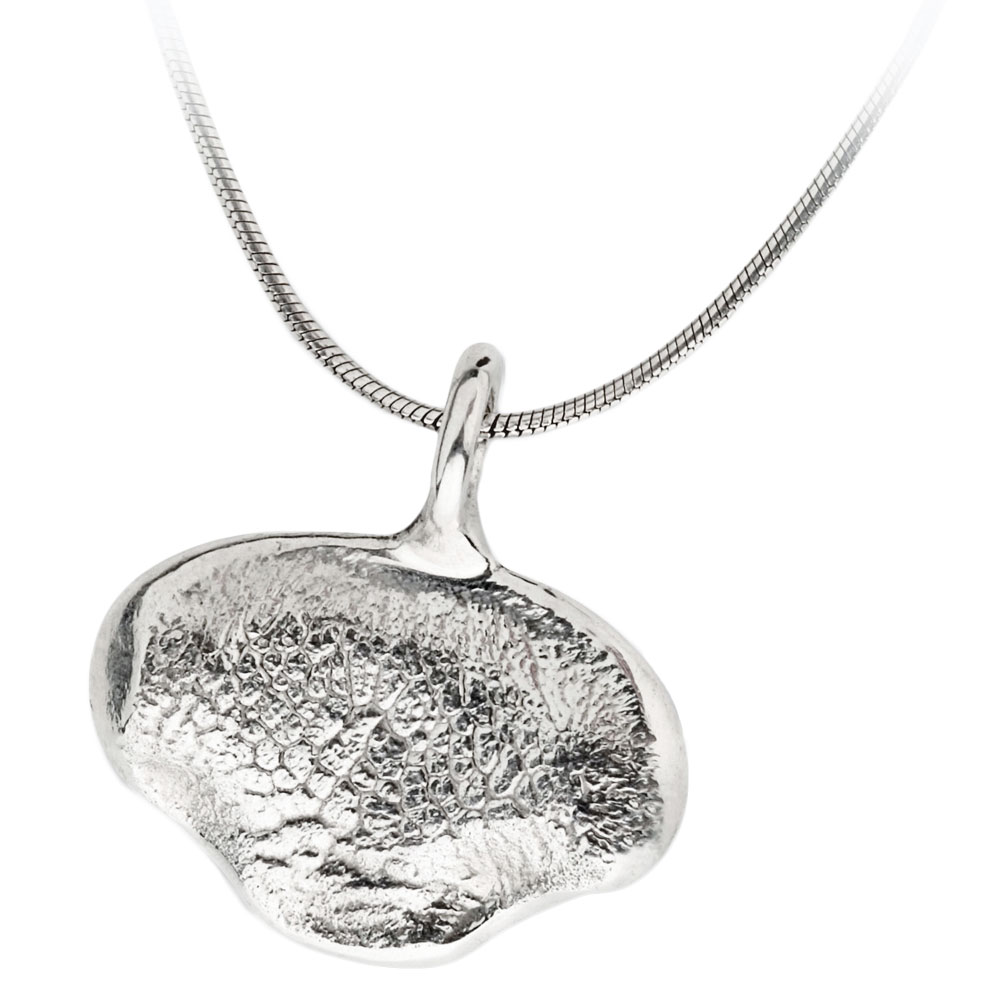
(From $277, robinslovingtouch.com)
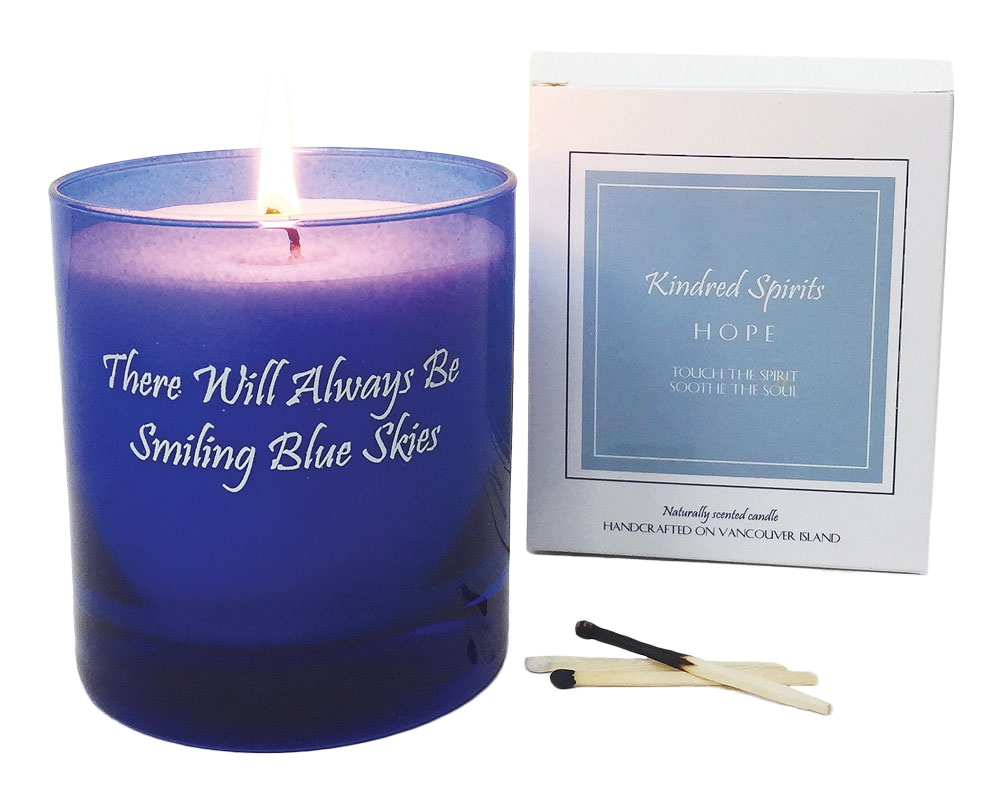
………………………………………………………………………………………………………………………………
Dr. Berkshire agrees, saying the response from pet families about his end-of-life home visits have been the most rewarding of his career.
“It means so much to those people. They thank you for taking the extra time, for making things peaceful for them and their pet. And although they had a lot of fear it was much easier than they anticipated it being.”
After saying goodbye to Rosie, being there for her in the comfort of her own home, Lisa Walsh said she would “absolutely” recommend it to others. She can’t imagine the idea of taking an animal to a clinic, or worse, “letting them go alone.” She wants her pets to know in their final minutes, as it was during their whole lives, she will be with them all the way.
“There is always guilt with euthanasia: what more could I have done, etc.,” she says.
“Consider yourself and how you would want to go. Do you want to go alone with strangers or do you want those that love you there?”
Although some may consider it morbid, it’s something that Dr. Chenault thinks about often, not just for her canine clientele—who “just get to fall asleep eating treats”—but also how she envisions the ideal end to her own life.
“I’ve told my children I want to go to sleep eating chocolate in my own bed,” she says.
“Who wouldn’t want to go like that, surrounded by loved ones?”
Dogs Look For Their People In Their Last Moments
This was shared on Facebook by Hillcrest Veterinary Hospital and received over 130,000 shares
“When you are a pet owner, it is inevitable, the majority of the time, that your pet will die before you do. So if and when you have to take your pet to the vet’s office for a humane pain-free ending, I want you all to know something. You have been the center of their world for THEIR ENTIRE LIVES!!!! They may just be a part of yours but all they know is you as their family. It is a crappy decision/day/time/event every time, there is no argument against that, and it is devastating for us as humans to lose them. But I beg you DO NOT LEAVE THEM. Do not make them transition from life to death in a room full of strangers in a place they don’t like. The thing you need to know that most of you don’t is THEY SEARCH FOR YOU WHEN YOU LEAVE THEM BEHIND!!!!
They search every face in the room for their loved person. They don’t understand why you left them when they are sick, scared, old or dying from cancer, and they need your comfort. Don’t be a coward because you think it is just too hard for YOU; imagine what they feel as you leave them in their most vulnerable time and people like me are left to try our best every time to comfort them, make them less scared, and try to explain why you just couldn’t stay.”
—From a tired, broken-hearted vet
Grieving?
We know how devastating it is to lose a cherished canine friend so we created a space for posting memorial tributes (free of course) in remembrance of dogs who have crossed the rainbow bridge. You'll also find resources to help you cope with your loss. Remember that life is a circle and true love forever.
“All that we love deeply becomes a part of us.”—Helen Keller
► Post a memorial and find grief resources at moderndogmagazine.com/dog-memorials
Join the newsletter and never miss out on dog content again!
"*" indicates required fields
By clicking the arrow, you agree to our web Terms of Use and Privacy & Cookie Policy. Easy unsubscribe links are provided in every email.
